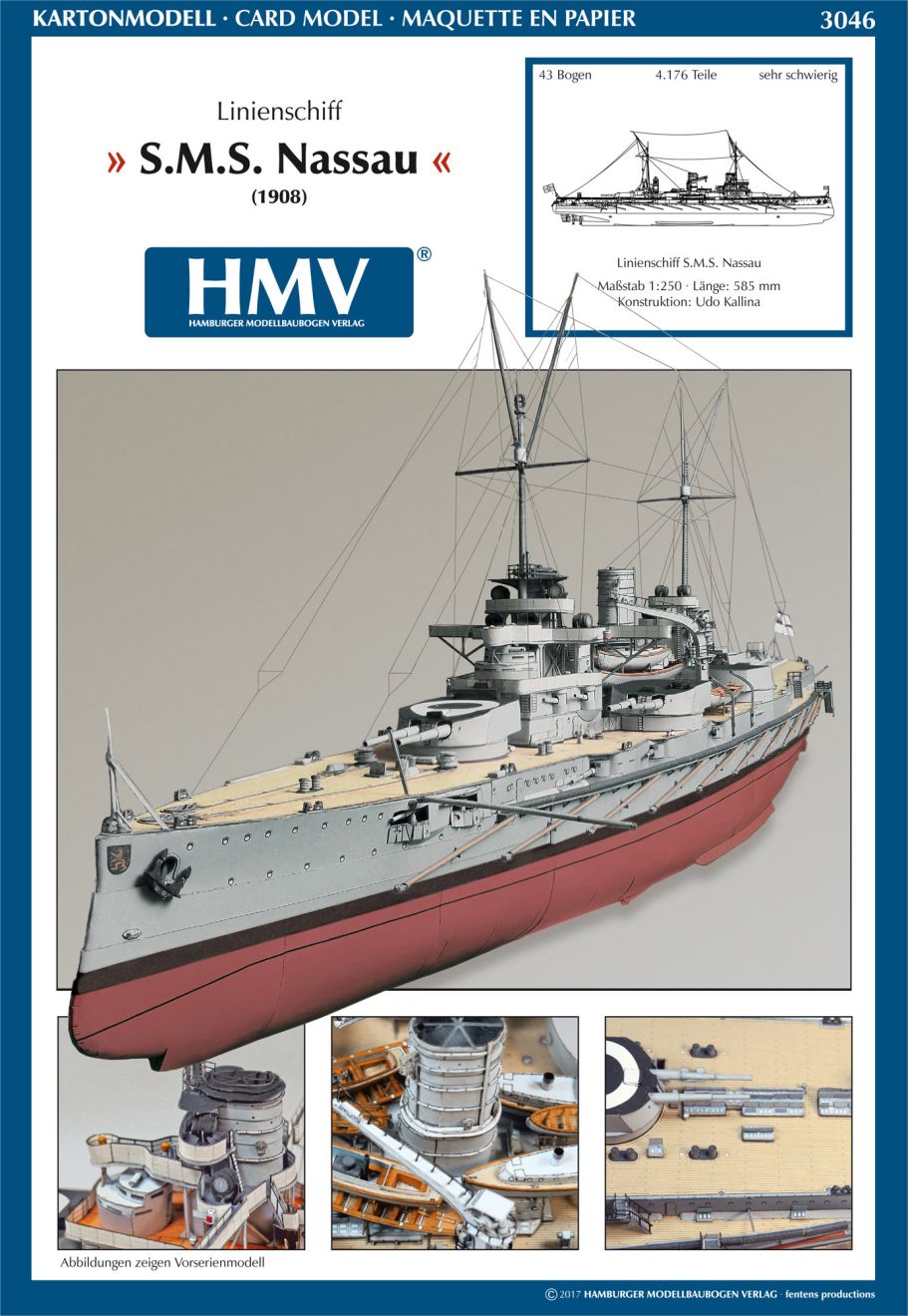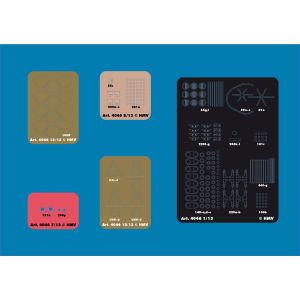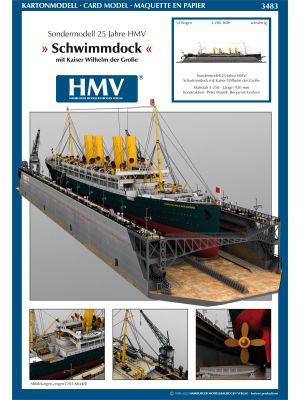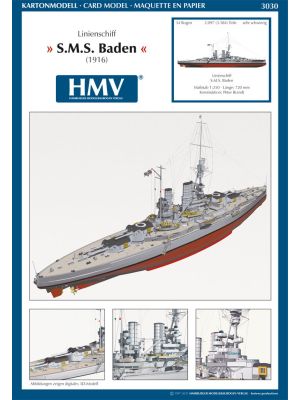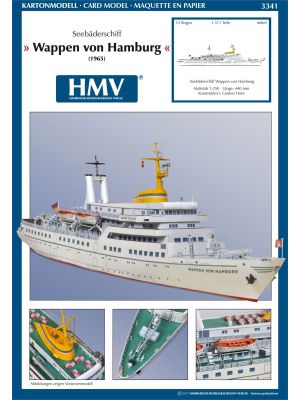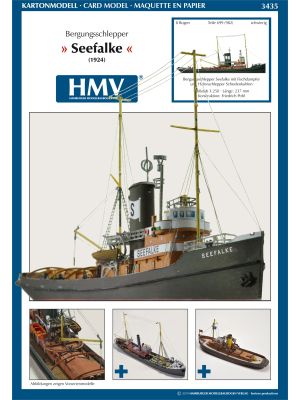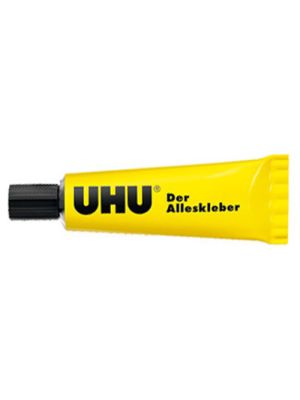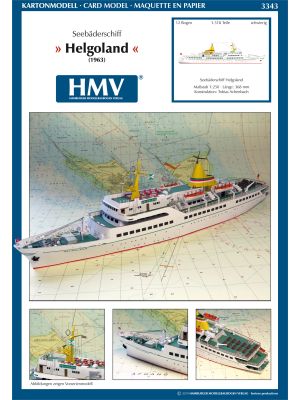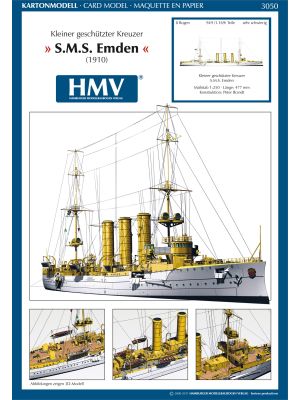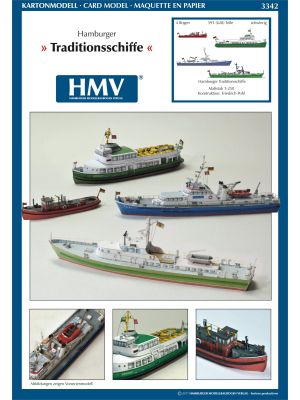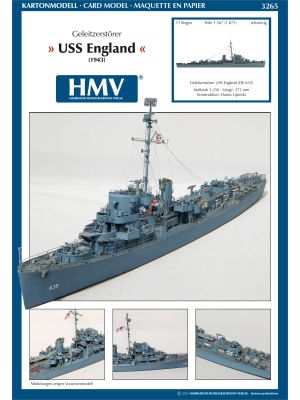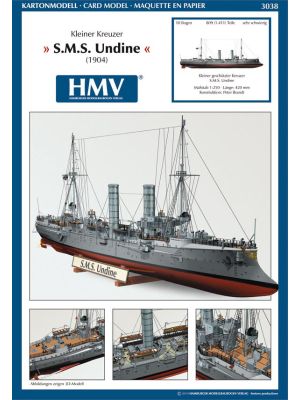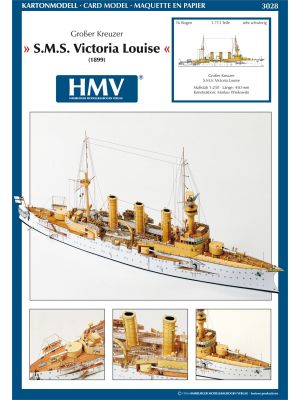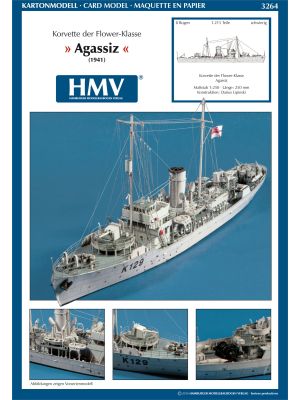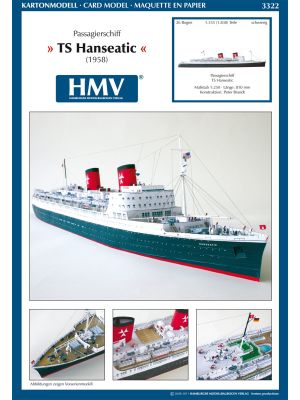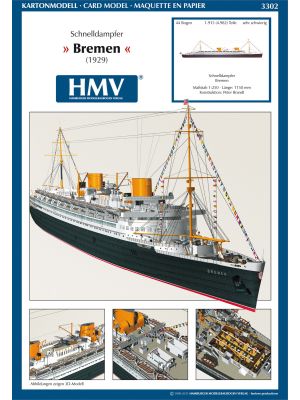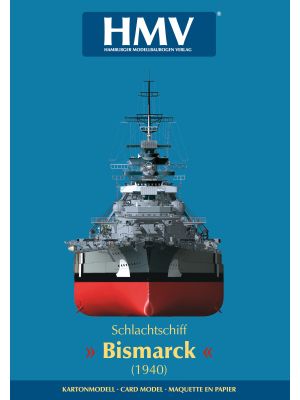Ship of the line S.M.S. Nassau
Scale: 1/250
Skill Level: very difficult
Size (LxWxH): 585x108x200 mm (23x4x7 inch)
This model of S.M.S. Nassau is another milestone in the history of the publisher HMV. It took the designer more than 3 years of research, development, and design work for this extraordinar paper kit. Based on prices and original plans and photo material this model is accurate to the last detail. HMV at its best.
With the Ship of the Line Nassau another battleship of the Imperial German Navy is available at HMV. This very detailed model promises a lot of building fun. And the thought through design by Udo Kallina guarantees perfect fitting and accurate details.
This model can be built as either as a waterline model or with full hull. A model stand for the ship with full hull is included as well. The distinctive armour on the ship’s hull is recreated with doubled over cardboard and very solid. With 48 pages of instructions there should be no further questions regarding how to build all the details available. A perfect model from every point of view.
The model highlights:
- Waterline or full hull model possible
- rotable gun turrets
- detailed masts
- with additional sheets for doubling over
- filigree cranes
- accurate dinghies
- Including model display
| Product type | Papermodel |
|---|---|
| Manufacturer | HMV Hamburger Modellbaubogen Verlag |
| Scale | 1/250 |
| Designer | Udo Kallina |
| Difficulty | very difficult |
| Sheet size | DIN A4 |
| Sheets | 43 |
| Parts | 4176 |
| Length | 585 mm (23.03 inch) |
| Width | 108 mm (4.25 inch) |
| Height | 200 mm (7.87 inch) |
| Bauanleitung | German, English, French, Spanish, Russian, Japanese, Pictures |
Technical data:
- launch: 7/03/1908
- shipyard: Kaiserliche Werft, Wilhelmshaven
- build number: 30
- length: 146.1 m
- width: 26.9 m
- draught: 8.76 m
- TRANSLATE: Seitenhöhe: 13,25 m
- engine: 3 upright 3-cyl.-steam engines
- power: 26,244 PSi
- displacement: 10,351 BRT
- top speed: 20 kn
- sister ships: S.M.S. Westfalen, S.M.S. Rheinland, S.M.S. Posen
- armament:
- 12 autocannons 28 cm
- in 6 double turrets
- 12 autocannons 15 cm
- 16 autocannons 8.8 cm
- 6 torpedo tubes 45 cm
- (1 at the bow, 1 aft, 4 to the sides)
S.M.S. Nassau and her sister ships Westfalen, Rheinland, and Posen were planned as replacement for the iron clad Bayern and other outdated iron clads of the Sachsen class. The development for the Nassau class began already back in 1904. Still history usually classifies this ship as the answer to the British HMS Dreadnought that was launched on February 10th in 1906. Nassau as type ship of this new class was laid down on July 22nd 1907 at the shipyard Kaiserliche Werft in Wilhelmshaven.
Previous naval actions demonstrated clearly that the fighting distance had to be increased from the (until then) usual 2,000 to 3,000 meters to an impressive 7,000 to 8,000 meters. On top of that problems had to be addressed with the coordination of guns with different calibres. A battleship with just one major gun calibre seemed to be the right solution. The six turrets on Nassau were placed in a hexagonal pattern on the ship. As a result only eight of the twelve 28 cm guns could be fired to each side. To front and aft six guns it was only six.
This placement was among other reasons necessary because Nassau and her sister ships were equipped with steam engines because the German suppliers was not yet able to produce powerful steam turbines. Furthermore Admiral Tirpitz attached great importance to the ability to fire into every direction. He thought that close combat would still be possible in spite of the bigger gun ranges that were developing. At first it was planned to equip Nassau with single gun turrets. But because of an adverse ration between weight of turret and armour on the one hand and firepower on the other this plan was abandoned and twin turrets were installed instead.
In the beginning the ship builders estimated that bilge keels were unnecessary due to the sheer width of the hull. This assessment proved to be wrong though as Nassau was very susceptible to any sea currents. This, of course, had a quite negative effect on the firing precision. Thus bilge keels were installed later and the ship’s movements were much calmer which benefitted firing precision tremendously.
S.M.S. Nassau was part of the II. Division of the first I. Squadron of the Imperial Navy in the North Sea. It took part in various operations. Probably the most important engagement for S.M.S. Nassau was the battle of Jutland. There she was hit by two grenades and was involved in a collision with the British destroyer HMS Spitfire.
At the end of World War I S.M.S. Nassau was taken from the German fleet and in April 1920 she went as reparation ship B to Japan. As Japan had no use for this ship it was sold to a British scrapping company and then finally scrapped in Dordrecht, Netherlands.


 Deutsch
Deutsch
